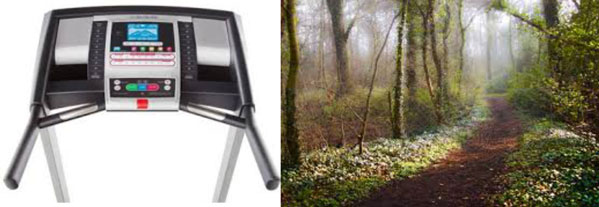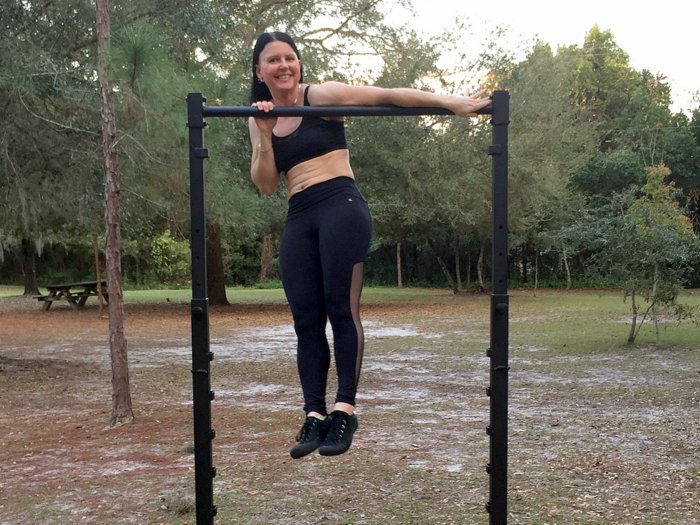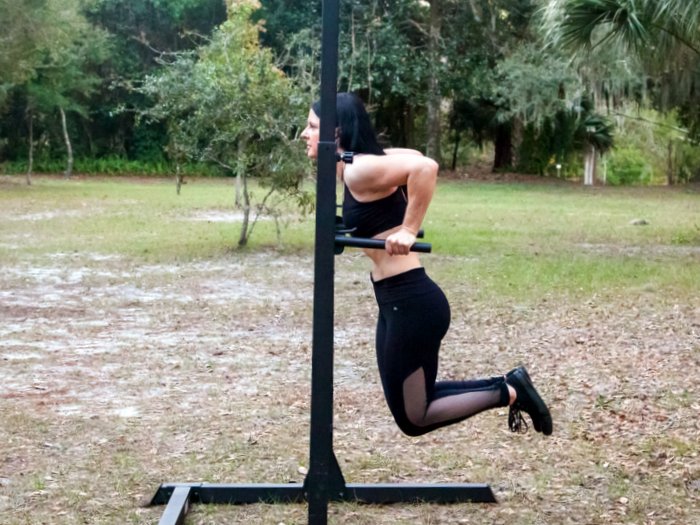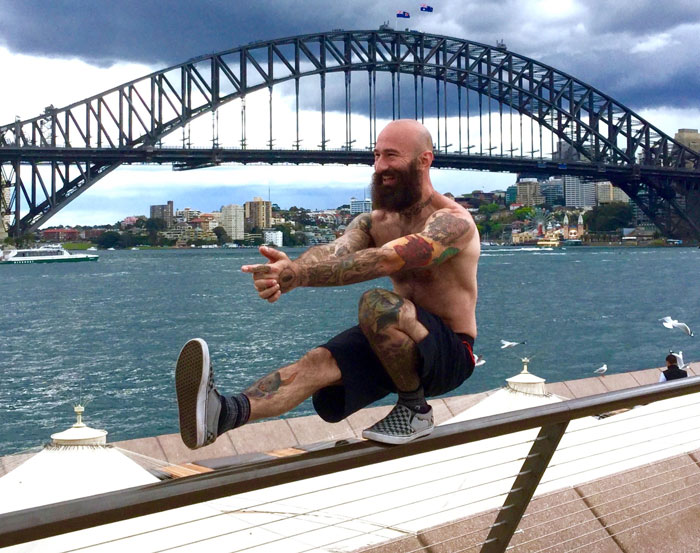
As human beings, we have a tendency to look for the magic bullet that will solve all of our problems. In calisthenics, the often sought after “magic bullet” is the perfect calisthenics workout routine.
Have you ever caught yourself muttering things like…
- “What’s the routine that will get me the same results as Al?”
- “Just tell me exactly what to do!”
- “Do you have a workout routine you recommend?”
Look, I get it… it’s easier to have a formula and just show up to do the work. It’s not as easy to craft your own personalized calisthenics workout routine based on your unique goals, needs, and abilities.
But unfortunately, the cold hard truth is that using a cookie-cutter routine will not only be unspecific to your goals, it can be downright dangerous. Just imagine if you have a leg injury and the workout routine has you performing pistol squats.
Ouch!
As Al mentions in his Make Your Own Workout blog post, “While many fitness guides spoon-feed the reader with rigid specific regimens to follow, I’ve chosen to empower my followers by leaving the suggested program design open-ended.”
I 100% agree with this approach. Every calisthenics trainee is a unique individual with unique needs and goals. For example, if you want to master the front lever – your training routine will likely look much different than someone who wants to master the one-arm chin-up.
The same thing goes for injuries. If you’re working through a shoulder injury for instance, your training routine will look vastly different than someone who has healthy shoulders.
There are simply too many variables at play to follow cookie-cutter routines.
For me personally, I like to use other routines as inspiration to create my own, and I highly encourage you to do the same. If you see someone post a calisthenics routine, take a look and see if you can morph it to fit your unique needs, abilities, and lifestyle.
“Dang-it Tim! You’re not helping me much here! Can’t you give me something?”
Okay, okay. I hear you. How does a “skeleton outline” of a great calisthenics workout routine sound? In other words, an overarching structure you can start with to eventually customize and build your own routines?
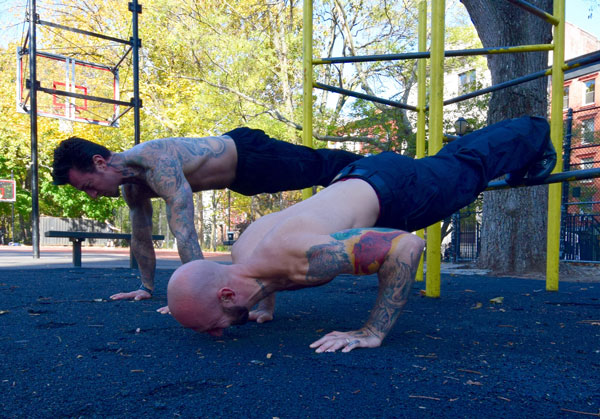
Depending on who you talk to and which calisthenics circles you run in, this structure may vary slightly. But in general, the structure is as follows:
- Warm-up / Mobility
- Skill Or Technique Work
- Strength Work
- Endurance / Cardio
- Cool-down / Flexibility / Pre & Rehabilitation Work
Warm-up / Mobility
I think most everyone would agree that the warm-up should go at the very beginning of a workout. As Paul “Coach” Wade mentions in Convict Conditioning, imagine your muscles as a thick slice of mozzarella cheese. What happens when you pull it out of the frig and give it a tug? It crumbles to bits, right?
But what if you took that same slice of cheese and microwaved it for a few seconds before pulling on it. It would be all soft and stretchy.
Soft and stretchy muscles are what you want before you get into the core of your workout.
The warm-up is important for several reasons, but it can be boiled down to two major factors:
- Helps prevent injury
- Improves performance
There are several warm-up techniques you can implement into your calisthenics workout routines. One is to just use a generalized warm-up routine like the You Are Your Own Gym Warm-up Video. Another technique is to do easier variations of the exercises you plan to do in your workout.
For example, if you plan to do pistol squats in your workout, you might want to warm-up with normal bodyweight squats. Or if you plan to do one-arm push-ups, you could warm-up with a few sets of regular pushups.
If you have specific mobility weaknesses, you’ll want to address them in the warm-up. For example, I suffered a shoulder injury from back in my weightlifting days that still haunts me to this day. Although minor at this point, I always add lots of shoulder mobility exercises (such as shoulder dislocates) into my warm-up to ensure my shoulders are good to go for the workout. If you plan to work handstands in the skill portion of your routine, I highly recommend warming-up your wrists with a few mobility and stretching exercises.
You’ve successfully warmed up once you’ve got the blood flowing, raised your heart rate, and broken a light sweat (typically 5-10 minutes).
Skill Or Technique Work
Skill or technique work is the bridge between your warm-up and the main strength portion of the workout. In this part of the routine you are focused on developing your bodyweight skill & technique goals. For example, handstands, elbow levers, and L-sits are common skill goals. Any exercise that requires more balance/technique than strength can be considered skill work.
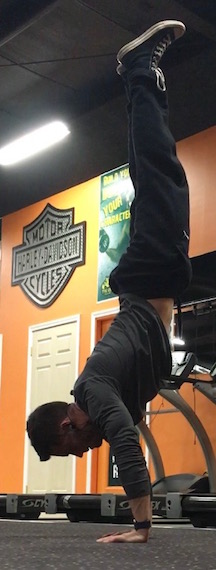
As you progress in strength, it is common for a bodyweight exercise to previously be categorized as strength work, but then re-categorized to skill work as strength improves. For example, if you’re just starting out the L-sit progressions might be too difficult to put in the skill portion of the workout. You could first include them in the strength portion, and then after a few weeks or months move them to the skill section once they become easier.
While some strength is required for skill work, it should mostly be balance/technique. Front levers, for example, are not skill work for most of us. The end of the skill phase should leave you feeling fired up and ready to go for your strength training exercises, not drained.
Skill work comes before strength work because you have not yet exhausted your muscles in the main strength training portion of the workout.
Strength Work
Strength work is the meat & potatoes of the workout. This is where you’ll perform your bodyweight exercise progressions. For example, if your goal is the front lever, you would include front lever progression exercises here.
Structuring this part of the workout routine is another post in and of itself. For example, should you do full body or split workouts? How many exercises should you do? How long should you rest between sets?
Again, the answer is there is no right answer. It is 100% dependent on your own unique goals and abilities. For example, someone interested in hypertrophy (increasing muscle size) would likely want to train in a different rep range than someone who is primarily interested in gaining strength.
Similarly, a beginner would train differently than an advanced trainee.
You might hate me because I’m not going to give you a cookie-cutter formula that you can go and apply right away. However, since the majority of trainees are in the beginner to intermediate training phases, I’ll throw out a few rules of thumb that you can use as inspiration to get started:
- Choose approximately 3-6 exercises total (1-2 push, 1-2 pull, 1-2 leg)
- For strength, rest 2-3 (and up to 5 if necessary) minutes between sets
- The 3-8 rep range gives you a nice blend of strength and hypertrophy
- Beginners will likely benefit more from full-body routines as opposed to split routines
- Order the exercises such that the ones you want to progress in most are completed first
Endurance / Cardio
This section is entirely optional. If you have cardio goals, this is where to include them in your workout routine. Alternatively, you could do cardio on your off days. The take-away here is that cardio should be included after strength work, not before it.
Why is that?
Most forms of cardio are less taxing on the central nervous compared to strength work. You also haven’t really tapped into the endurance capacity of your muscles too much yet (unless you’re specifically training endurance with your rep scheme). So you can still get a fairly decent cardio session in after strength training. But doing the reverse (cardio before strength training) would most likely negatively affect your strength work.
Again, if your primary goal is endurance / cardio, then it might make sense to put it before your strength work. But in general, if you’re someone who wants to progress in calisthenics (and I’m guessing you are) then you should do cardio either on your off days or after strength work.
Cool-down / Flexibility / Pre & Rehabilitation Work
The cool-down is the place to include static flexibility stretching, additional mobility work, and pre/rehabilitation exercises.
If you have a specific injury that you’ve worked around in the core of your workout, the cool-down is the best place to include rehabilitation exercises for that specific injury. Or if you have an area of tightness, hone in on that particular area during the cool-down. Again, the structure of this section is entirely dependent on your particular goals or problem areas.
What does your calisthenics workout routine look like? Do you use an overarching structure similar to the one outlined in this post? Let me know in the comments below!
***
Tim Ponticello is a calisthenics enthusiast who is on a mission to help others master their body weight and learn a few cool-looking skills in the process. When Tim isn’t hanging upside-down on his rings, he loves to snowboard, cook, read a great book, and visit new restaurants with his girlfriend. You can learn more about Tim at timothyponticello.com.
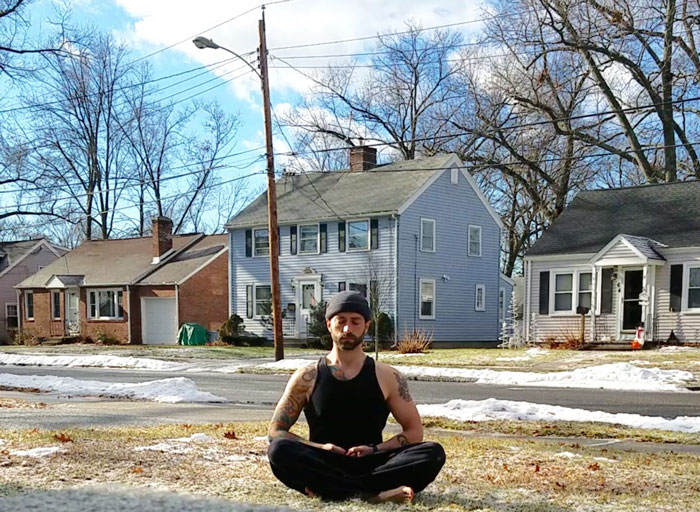

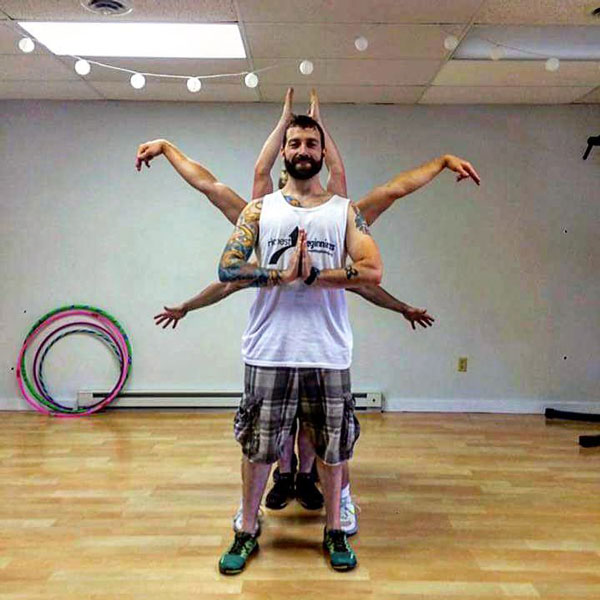
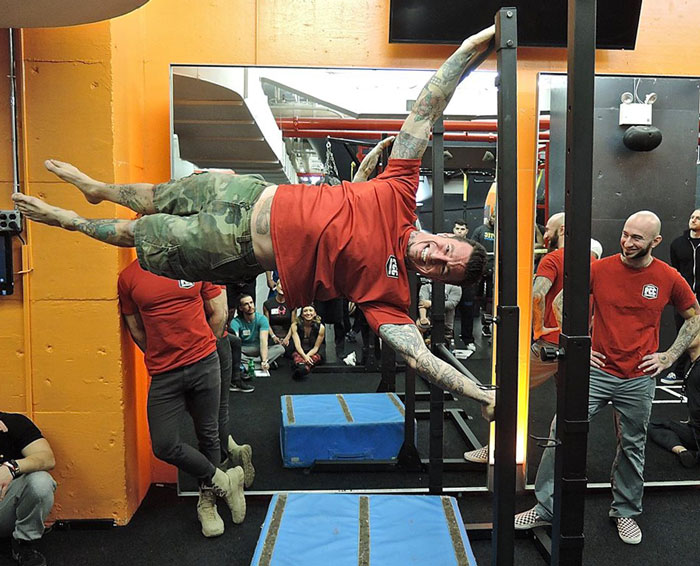
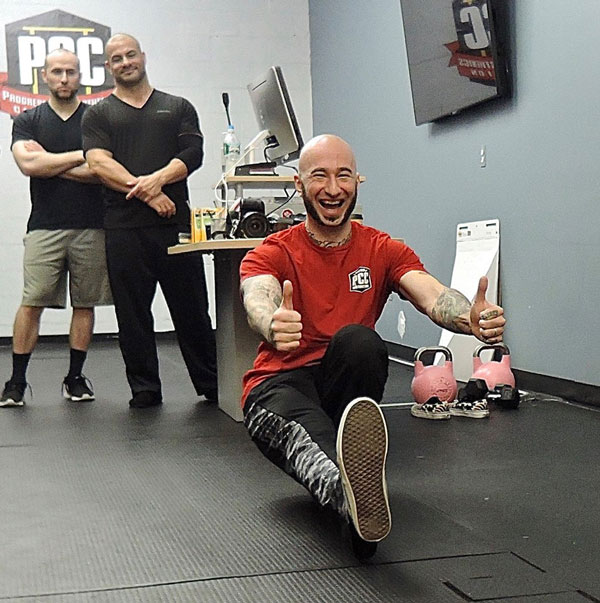
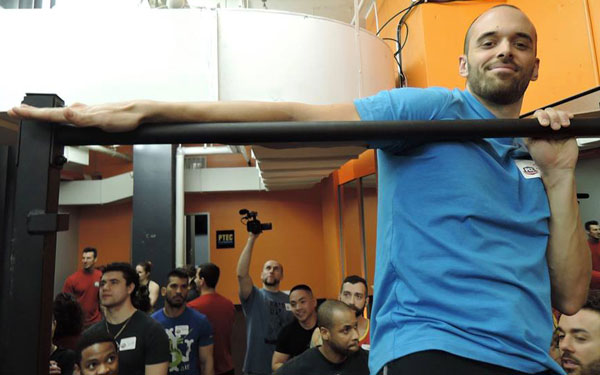

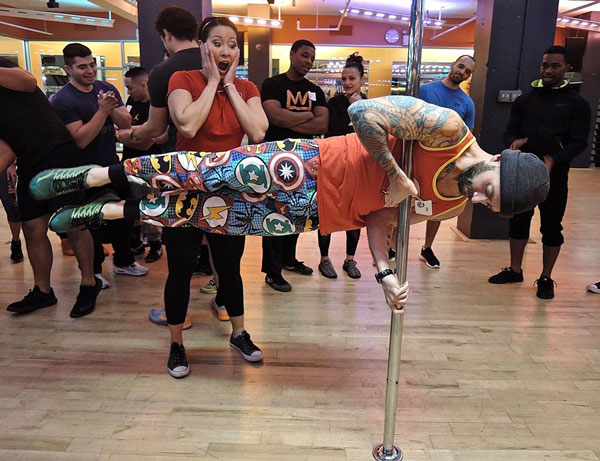
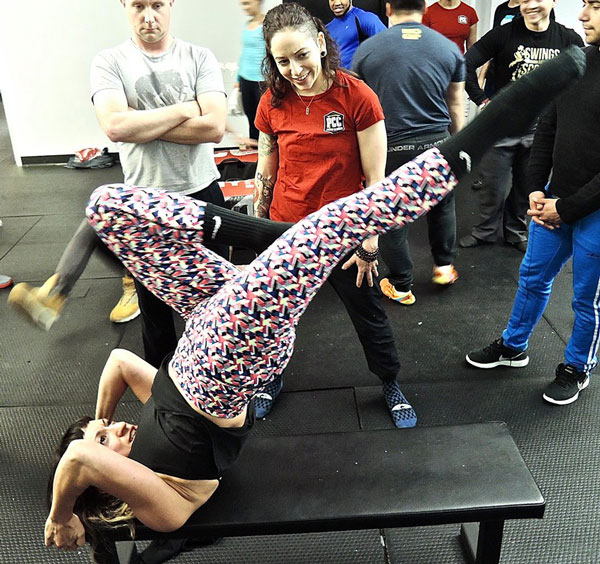
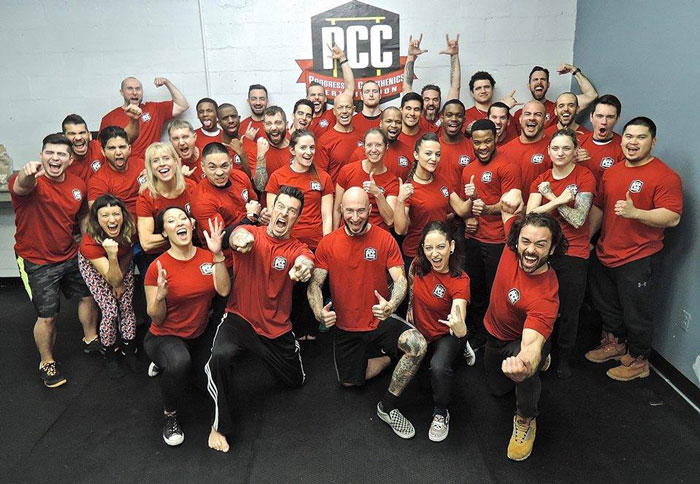
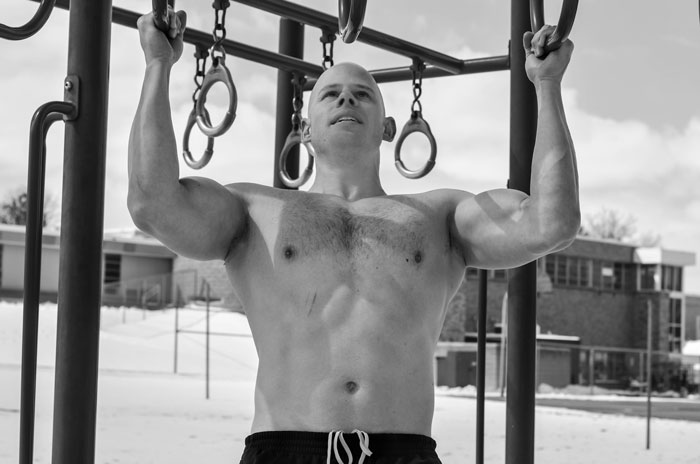
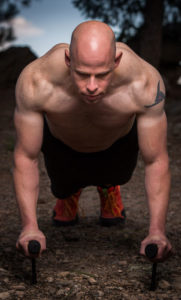 Advantage #1 Low maintenance training
Advantage #1 Low maintenance training
